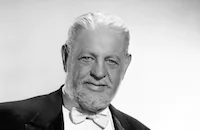The Unpainted Woman
Cast & Crew
Tod Browning
Mary Maclaren
Thurston Hall
David Butler
Laura Lavarnie
Fritzie Ridgway
Film Details
Technical Specs

Synopsis
Gudrun Trygavson works in the American wheat country as a hired girl to Mrs. Hawes. Charley Holt, the son of a rich family, takes the Swedish girl to a dance where she is snubbed by his mother and sister. Enraged at his snobbish relatives, Charley marries Gudrun and gets a menial job as a mill worker. A child is born, but Gudrun's life is unhappy because Charley becomes an alcoholic. After five years of marriage Charley dies in a saloon fight. Gudrun then buys a small farm and works the wheat fields. When tramp Martin O'Neill comes to the farm, Mary feeds him and he works for her. Martin later saves Gudrun and her child from a burning barn but is suspected of starting the fire himself and narrowly escapes a lynching. Finally, it is disclosed that the fire was actually started by Heine, a jealous rival, and Gudrun and Martin are married.

Director

Tod Browning
Cast

Mary Maclaren

Thurston Hall
David Butler
Laura Lavarnie
Fritzie Ridgway
Willard Louis
Carl Stockdale
Lydia Yeamans Titus
Mickey Moore
Crew

Film Details
Technical Specs

Quotes
Trivia
Notes
Lewis' story was originally caled "Prairie Gold." Contemporary sources conflict on whether Stewart or Tyler was the film's assistant director. Production charts in contemporary trade journals indicate that Siegler replaced Gosden as cinematographer, and that Wecker replaced Dyer as properties supervisor. Mid-production trade articles announced that the film's company planned to shoot location scenes in the Imperial Valley, CA and in Kentucky. Available contemporary sources only identify the second propman as "Wecker."












